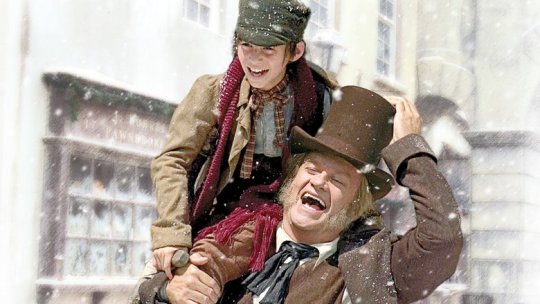Here I Raise My Ebenezer: Why A Christmas Carol Lasts Foreverby Daniel Carlson
By Yasmina Tawil
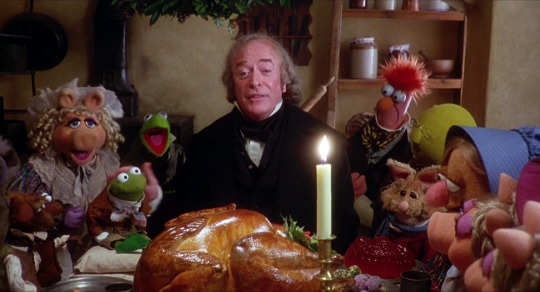
“Samuel took a stone and set it up between Mizpah and Jeshanah, and named it Ebenezer; for he said, ‘Thus far the Lord has helped us.’”
— 1 Samuel 7:12
“I don’t deserve to be so happy.”
— “A Christmas Carol” (1951)
///
Few works of art can lay claim to the cultural real estate occupied by Charles Dickens’ A Christmas Carol. Published in December of 1843, the novella was partly inspired by Dickens’ visits to the more abject areas of England, along with his desire to create something that would motivate the public to ease the plight of the least among them. He planned earlier that year to write a political pamphlet about the horrors of child labor and the poverty state, but he changed his mind when he realized that a fictional story, with its heightened reality, might better persuade readers.
The book was an immediate critical and commercial success: the first run of what would wind up being dozens of printings sold out by Christmas Eve, and by February 1844, stage versions were already being put up across London. Dickens returned to the well with four more special holiday tales throughout the 1840s, but none were received like A Christmas Carol. He delivered excerpts from it at a series of public readings he gave in his final years, before dying in June of 1870 at the age of 58. That seems so long ago now—the American Civil War had ended just five years earlier—but the great span of interwoven generations since then shows how close it still is. It was only eight years after Dickens’ death that Eadweard Muybridge captured a series of photos showing a horse at a gallop, the precursor to motion pictures; another 15 to 20 years, and you have Georges Méliès and the Lumière brothers revolutionizing an art form. As the turn of the century brought with it the explosion of creativity and development that would turn into the early film industry, Dickens’ work was still present in people’s minds. He’d been gone just over 30 years the first time A Christmas Carol was adapted to the screen, and why not? It was a massively popular story, and early filmmakers were eager to get their hands on any stories they could find. That first adaptation was a short, and it was British, too: Scrooge, or Marley’s Ghost came out in 1901, meaning it’s entirely likely that some of the people who watched that film in its debut had lived alongside Dickens. Maybe they’d even known him. We are never far from the past.
///
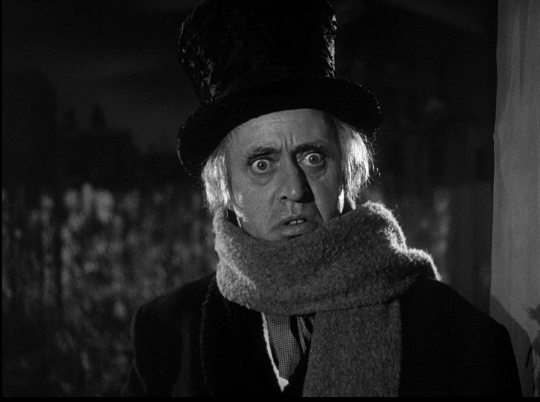
That was, of course, just the beginning of what would quickly become a tradition in the film industry of adapting A Christmas Carol to the screen. Dickens’ other works found their way to theaters, too, but not nearly as often as A Christmas Carol did. This (admittedly unscientific but nevertheless helpful) roundup on Wikipedia shows 45 films based on A Christmas Carol, with the runner-up, Oliver Twist, clocking 19 adaptations. That averages out to a new Christmas Carol movie about every two and a half years since 1901. Every American born since the beginning of the film industry has been inundated with movies based on this one book.
Part of the reason can be traced to the story itself. At the risk of over-explaining something that is, according to the thesis of this very essay, well known to anyone who could be reading it, the plot of A Christmas Carol is perfectly suited to film. Ebenezer Scrooge, an elderly miser and business owner who regularly mistreats his chief employee, Bob Cratchit, is visited on Christmas Eve by the ghost of his late colleague, Jacob Marley. Wearing chains that he “forged in life,” Marley warns Scrooge to turn from the path of greed and cruelty and to embrace his fellow man in love and friendship. To make sure Marley gets the message, he tells Scrooge that the old man will be visited by three more spirits: the Ghosts of Christmas Past, Christmas Present, and Christmas Yet to Come. Each of these spirits show Scrooge what his life has really been like, and what people really think of him. Forced to reckon with a life devoid of love and defined by emptiness, Scrooge experiences a spiritual awakening. He repents of his deeds and promises to live a better life, awakening to find himself safely back in his bed on Christmas morning. Overjoyed, he mends fences with his nephew and extended family, gives Bob a raise so he can care for his sick child, and generally becomes beloved by all he meets. The End.
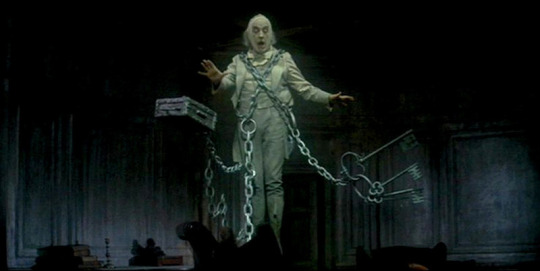
Right away, you can see how strong, how sturdy, this story is on the page. A man at his lowest state, whose journey through his own past reveals to the reader/viewer that he used to be capable of real love; a cleanly defined path through the man’s life, describing the arc of his moral decay while also showing the real, present-day man start to soften as he acknowledges what he’s done to himself; and finally, a grim look at how he’ll be bitterly remembered if he doesn’t change his ways. Scrooge’s moral transformation in the face of his sins is so organic, so understandable, and so welcome that the story itself feels not engineered or written but simply plucked out of the atmosphere and given life. It comports itself ideally to the arc of character growth practiced by storytellers for millennia and preached by everyone from Aristotle to Joseph Campbell to Kurt Vonnegut to Dan Harmon.
Here’s how Campbell described the hero’s journey in his seminal The Hero With a Thousand Faces from 1949: “A hero ventures forth from the world of common day into a region of supernatural wonder: fabulous forces are there encountered and a decisive victory is won: the hero comes back from this mysterious adventure with the power to bestow boons on his fellow man.” That’s Scrooge’s story to the letter. The beats of A Christmas Carol also match pretty well with Vonnegut’s description of what he calls “the most popular story” format “in Western civilization.” He maps it to the tale of Cinderella: a character is at their lowest possible state of sadness or moral suffering, before being gradually elevated by the intercession of a benevolent supernatural power (the fairy godmother, or Scrooge’s three spirits), before ultimately falling almost all the way back down (Cinderella when the magic fades after the ball, Scrooge when he starts to have a change of heart but is terrorized by the vision of the future), only to be saved again and experience ultimate joy (Cinderella gets her glass slipper back and runs off with the prince, Scrooge is returned to his life overwhelmed by joy and love). It’s not that Dickens was derivative, but rather that he was tapping into the kind of classic mythical structure that’s animated drama for all of human history. Scrooge’s tale is a perfectly paced example of the most popular kind of narrative, so it’s no surprise so many filmmakers have returned to it over the years. It contains within its slender frame everything you need to make a great story.
///

Nested with the story’s structural appeal is its ethical one. Simply, A Christmas Carol is designed to inspire faith and charity in its audience like few other narratives.
Dickens’ desire to come up with a story that would encourage readers to extend love and compassion to the less fortunate succeeded better than he could possibly have dreamed. Part of it is because A Christmas Carol doesn’t traffic in metaphor. Scrooge doesn’t have dreams about his old life, nor are the scenes of his early days presented as flashbacks or shifts within the narrative space. It’s a story of the supernatural, directly presented to the reader as things that happened. Within the construct of the narrative, they’re fully real. As Dickens writes at the start of the book, “There is no doubt that Marley was dead. This must be distinctly understood, or nothing wonderful can come of the story I am going to relate.” It’s delivered with the clarity and forthrightness that aligns with Dickens’ earlier plans to write a political pamphlet. His primary goal here isn’t to tell a good story, though he does that; it’s to call his readers to action.
That sense of outward momentum—of a story designed to exist as a tool for greater social change—is key to A Christmas Carol’s longevity in the film world. There have been wonderfully acted, deeply moving adaptations, notably the 1951 British version titled Scrooge (released in the U.S. as A Christmas Carol) starring Alastair Sim as the title character. But there have also been plodding, empty, disjointed versions, like the 2009 entry directed by Robert Zemeckis and rendered in motion-capture CGI. No single great version of the film is enough to stop other people from adapting the story; no single bad version is enough to dissuade them, either. It’s because underneath the film’s plot is driven by the engine of humane, compassionate fraternity designed by Dickens. The story, and every possible film version of it, appeals ceaselessly to the better angels of our natures.
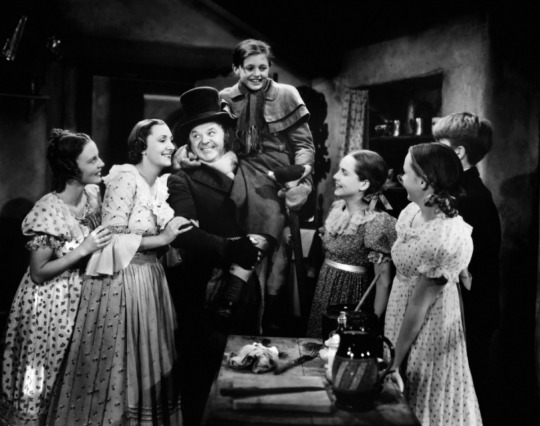
It’s such a robust story idea that it even survives translations into other film parables. The best of these would have to be Frank Capra’s It’s a Wonderful Life, from 1946. While that film has also spawned its own imitators (most notably in a rash of Very Special Episodes across the U.S. sitcom landscape of the 1980s and 1990s), it’s essentially a reworking of A Christmas Carol. The protagonist, George Bailey (James Stewart), is guided by supernatural forces—in this case, his guardian angel—to revisit his life’s chapters and to see what the world would be like without him, and this intervention causes him to reevaluate the meaning of life and place his faith in relationships, not financial success. And while George is no Scrooge, he does battle with one: as the owner of a building and loan company in a small town, he finds himself at odds with a hard-hearted miser who mistreats everyone in his path. (That miser, Henry Potter, was played by Lionel Barrymore, who not coincidentally played Scrooge in radio plays of A Christmas Carol.) It’s a Wonderful Life comes as close as anything ever could to replicating the sense of joyous, heart-bursting epiphany that changes Scrooge into a new man, as George Bailey is saved from destitution by the people he’s helped throughout his life, and as he comes to understand the truth of his guardian angel’s wisdom: “No man is a failure who has friends.”
Part of what makes George Bailey’s story so powerful is its subliminal spiritual connection to Dickens. That spirit present at the end of It’s a Wonderful Life—to do for those in need, to forgive, to share—would not be what it is without the precedent and example of A Christmas Carol.
///
A hundred years before Dickens wrote his novel, a British minister and composer named Robert Robinson wrote a hymn he titled “Come Thou Fount of Every Blessing.” One of the lyrics reads, in part: “Here I raise my Ebenezer, here by thy great help I’ve come.” He was referencing the Old Testament passage in 1 Samuel when Samuel offered a sacrifice to God so that the Israelites could defeat the Philistines in battle. When the Israelites won, the passage goes, Samuel set up a stone and named it “Ebenezer,” meaning “stone of help.” It was a monument designed to acknowledge that the success he’d just seen was not of his own making, but by divine intervention.
That sense of divine intervention, of lives saved by forces outside their ken, is ultimately what every film version of A Christmas Carol is about, and why we’re still talking about the story after all these decades. While Dickens introduced the word “Scrooge” to the lexicon, he worked with old language to make his points. He named his character after a symbol of victory delivered by the almighty, to signal at the outset that Scrooge would not be rescued by his own doing. He’s not driven to change of his own accord, nor even through patient interaction with those around him. It’s supernatural forces and spirits from the afterlife that break through his carapace.
If one of the foundational texts of the canon of Western literature is the Bible, then one of the foundational emotions of that canon is a protagonist’s feeling of inherent worthlessness. The mythology of Christianity’s texts is one rooted in the abject nature of a given person or community, followed by supernatural methods of reconciling that person or community to a state of grace. When Scrooge says in the 1951 film that he doesn’t feel like he deserves to be happy, he’s tapping into that sense of nervousness about accepting grace and mercy. This is something that authors have been tapping into for centuries, peppering their works with biblical allusions as a way to underscore a character’s beliefs or motives; think of Dostoevsky’s “idiot,” who greeted the world as guilelessly as a modern messiah. Such infusions aren’t allegories (the new stories aren’t retelling the old ones with new characters), nor are they outright metaphors (they aren’t meant to represent something else, but rather to exist as artistic works and narratives in their own right). Instead, works with biblical allusion are using a cultural, historical, and social context to illuminate their own worlds.
So while Dickens’ influences are Christian, A Christmas Carol isn’t a catechism or invitation to participate in a certain faith tradition, nor is it an allegory for salvation as understood and preached by Christian churches. Rather, it’s a story about redemption that is deeply spiritual but pointedly, crucially, secular. Scrooge becomes a repurposing of the biblical teaching of relying on a higher power, and his vocalized shame and repentance recall the sense of desperation found in conversion stories throughout those scriptures, but the story itself is outside all of those things. As such, A Christmas Carol survives across so many film versions because no amount of adaptation or reinterpretation can damage its core message, that is, its underlying promise that something bigger than you is out there willing to save your life, if only you would let it.
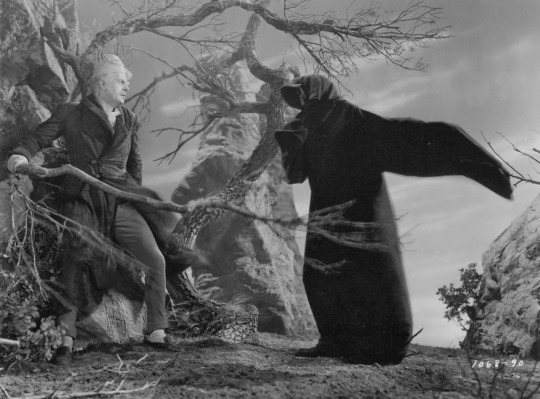
No other film protagonist invites such easy projection and transference by the viewer, and this is by design. Scrooge is created to be all of us—worse than we are, but just as needy of recognizing the humanity of those around him—and we are invited to re-enact his journey of redemption every time we watch his story play out on screen. There’s a renewability to Scrooge’s tale, an almost endless repeatability, that makes it so alluring, too. Here is the story of a man who is devoured by greed and sorrow, but who still finds his way through to the other side. We can always return to the Scrooge myth and renew our own sense of purpose, the way we always make resolutions in January that fall by the wayside before spring. We always want to feel it’s not too late, so we keep the story of Scrooge alive as a comfort for ourselves. It’s as if A Christmas Carol exists in the ether, like the melodies of Mozart, Scrooge eternally oscillating between miser and caregiver; always forgiven, always looking for forgiveness. Just like the people in the audience.
